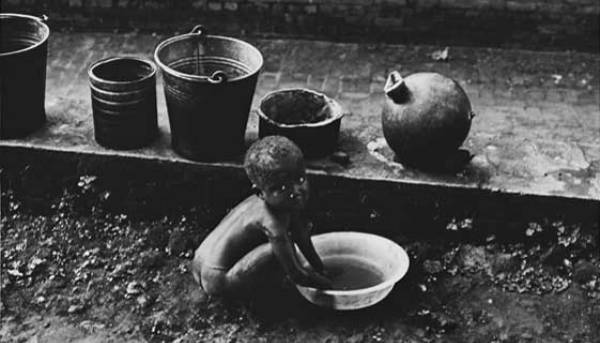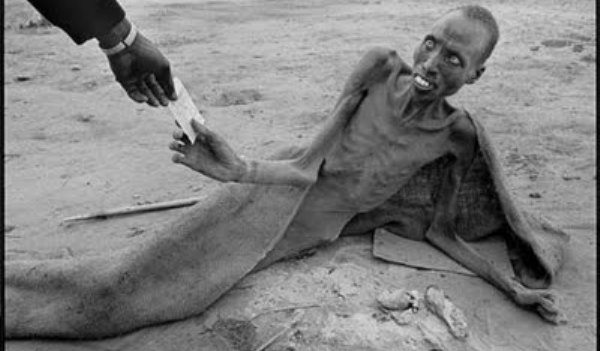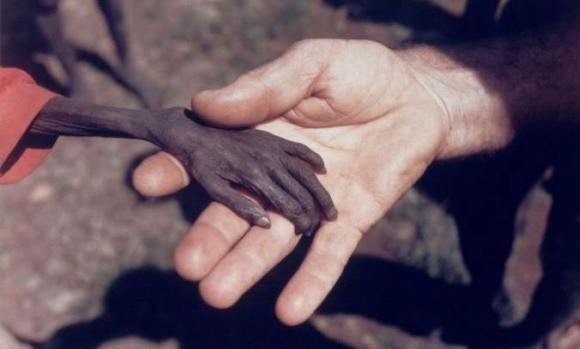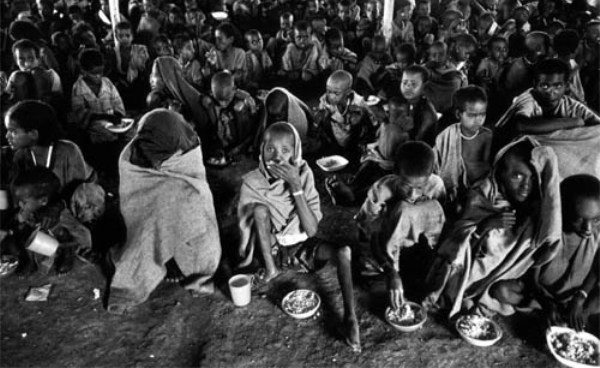Africa has been ravaged by drought and famine throughout history and as a matter of fact, famine in Africa has become an integral part of everyday living. Starvation in Africa is sometimes a result of conflict between rival nations or brought on by climate causes and more often than not, diplomatic relations and lack of media presence to translate the situation of things to outsiders make them slow to respond until the situation becomes critical. Africa has a comparatively conducive soil and atmosphere that can support a wide range ofAfrican foods but a lot of factors ranging from simple food preservation techniques to wars and conflicts work together to bring about deadly periods of starvation in Africa. This article highlights some of the most gruesome famines in Africa.
Most Deadly Periods of Starvation in Africa
10. Somalia Famine (2010-2012)
This is one of the most devastating famines that has ever occurred in Africa, approximately 260,000 people died during the Somalia Famine from 2010-2012. Already desolated by a famine only a decade earlier, almost 5% of Somalia’s population died from famine conditions with over half of the casualties being children under the age of 6. Although signs of the drought were known from 2010, outside nations waited until the famine reached its crisis to intervene. In July of 2011 the United Nations officially declared famine in Somalia. An estimated 4.6 per cent of the total population and 10 per cent of children under five died in southern and central Somalia,” the report said, saying the deaths were on top of 290,000 “baseline” deaths during the period, and double the average for sub-Saharan Africa and according to the United Nations, more than one million Somalis were refugees in surrounding nations, another million displaced inside the country, and around 2.7 million people needed life-saving assistance.
9. Sudan Famine (1998)
In 1998, Sudan underwent a catastrophic famine caused by drought and a lack of expedient action; the fragile infrastructure caused by civil conflicts between southern rebels and the government slowed down aid and made the famine even more severe. A combination of civil war and an already present drought led to famine conditions resulting in the deaths of over 70,000 Sudanese. Again, warning signals of the upcoming disaster were ignored in what is now referred to as a “humanitarian disaster.” Although relief organizations were prompted to send in additional help, aid planes were intermittently either postponed from going into the wartorn country, or thwarted by the Sudanese government.
8. Somalia Famine (1991-92)
Events that occurred in Somalia in early 1990s left the country on record as one of the places for most gruesome famines in Africa. In addition to a death toll of around 300,000, up to 2 million more Somalians were displaced from their homes as a result of this massive famine. Since 1991, when the dictator Mohammed Siad Barre was the leader, Somalia had been in a state of political unrest and civil war and when citizens were hit by hunger crisis, they were left without a government and depended upon outside nations to come to their aid. Eventually, the American government responded by sending in aid and relief shipments.
7. Ethiopian Famine (1983-1985)
Ethiopia has been structurally food deficient since at least 1980. The food gap rose from 0.75 million tons in 1979/80 to 5 million tons in 1993/94, falling to 2.6 million tons in 1995/96 despite a record harvest (Befekadu and Berhanu 2000:176). Even in that year, 240,000 tons of food aid was delivered, suggesting that chronic food insecurity afflicts millions of Ethiopians in the absence of transitory production shocks. (Devereux)
Unprepared for the dry season that they would face, from 1984-1985, Ethiopia found itself facing a nationwide famine. According to the UN, over 1 million people died during this famine. Although many nations sent money and food aid to Ethiopia, many of the supplies were not actually used by the government; food was left to rot and funds were used to purchase weapons and artillery supplies.
6. Uganda Famine
Between 1980 and 1983, a quarter of a million people in northwestern Uganda were threatened with famine because strife and drought had cut their harvest by two-thirds and from 1980–1981, 30,000 Ugandans died from famine. Uganda would face another famine just several years later.
5. Ethiopian Famine (1950 – 1973)
The famous “Face of Famine” shot of Birhan Woldu from 1984. (CBC/ Phillipe Billard)
The drought, which began during the 1950s, reached its climax between 1972–1973, leaving over 60,000 Ethiopians dead from famine. Crops died in the extreme dry conditions leaving citizens without any source of food. Although relief was made available, the Ethiopian government was in denial of the famine and repeatedly refused any outside assistance.
4. Sahel Famine
Sahel is not necessarily a country but a region known for its perennial droughts, between 1968-1972, the Sahel region faced one of its most devastating famines yet, killing over a million people in total. Since 1973, a special sector has been created within the United Nations called the The United Nations Sahelian Office which is specifically dedicated towards helping the Sahel region.
In 2010, a massive drought-induced famine struck Africa’s Sahel region and many parts of the neighboring Sénégal River Area between February and August 2010 and it would be one of many famines to have hit the region in recent times and there is still speculations that there is a looming starvation as early indicators suggest that a widespread food crisis is coming to Africa’s Sahel region, while some aid organizations say it has already arrived in the most vulnerable areas.
3. Nigeria Famine

From 1967-1970, Nigeria faced a famine brought on by a blockade of a territory that was fighting to secede known as Biafra by the Nigerian government. By using this blockade, the Nigerian government was able to prevent Nigerian citizens from accessing and food aid. Reluctant to take any aid from outside nations which supported the Nigerian government, most attempts to send in relief were turned away. As a result, over one million people starved to death.
2. Tigray, Ethiopia Famine
In 1958, a famine in Tigray led to a death toll of approximately 100,000. Often considered one of the most impoverished areas in the world, little government aid was offered. Unfortunately, most of the relief that was sent in did not actually make it to the Tigray citizens.
1. Rwanda/Burundi Famine
From 1943-1944, both Rwanda and Burundi faced drought conditions causing crops to die leading to a major famine in with 300,000 either died or were displaced. In 2012, there was another threat of hunger which affected Burundi and about 800 families with about 4,000 people from Busoni were reported to had fled their homes and about 100,000 affected by severe hunger in Kirundo, which lies some 230 kilometres (143 miles) north east of the capital Bujumbura.
Read more: http://answersafrica.com/starvation-and-famine-in-africa.html#ixzz2bfYNWgi6
Under Creative Commons License: Attribution









Nenhum comentário:
Postar um comentário